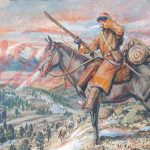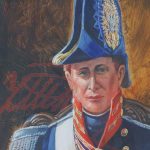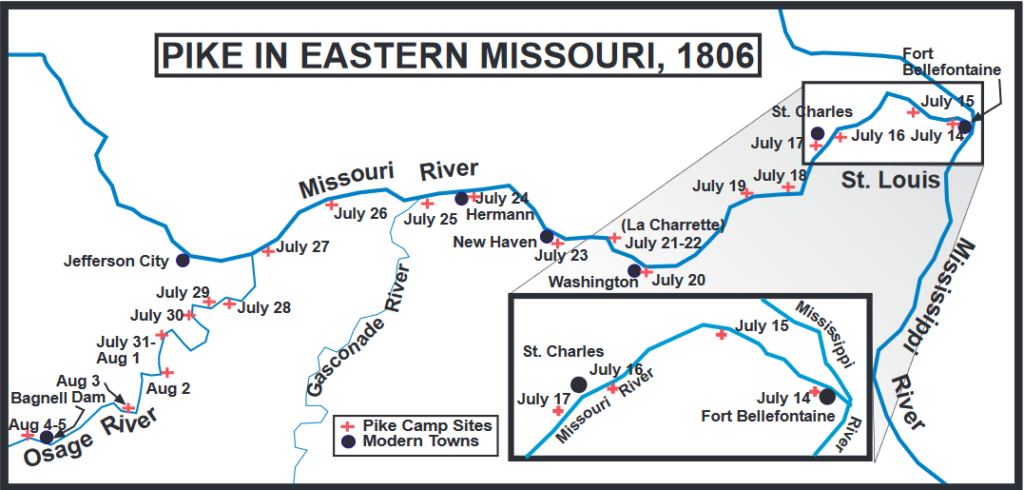
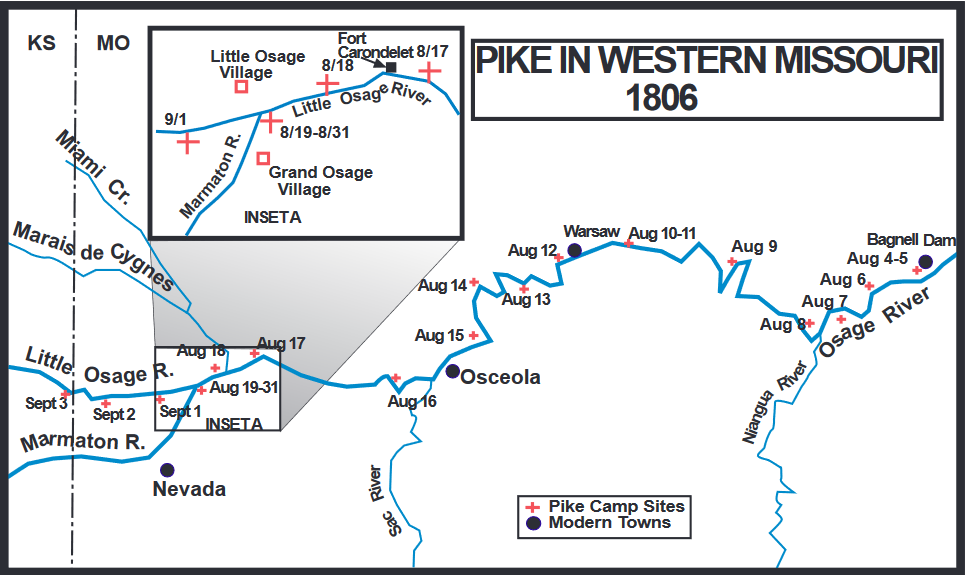
Tuesday, July 15, 1806 – “We sailed from the landing at Belle Fontaine about 3 o’clock p.m., in two boats. Our party consisted of two lieutenants, one surgeon, one sergent, two corporals, 16 privates, and one interpreter. We had also under our charge chiefs of the Osage and Pawnees, who, with a number of women and children, had been to Washington. These Indians had been redeemed from captivity among the Potowatomies, and were now to be returned to their friends at the Osage towns. The whole number of Indians amounted to 51.”
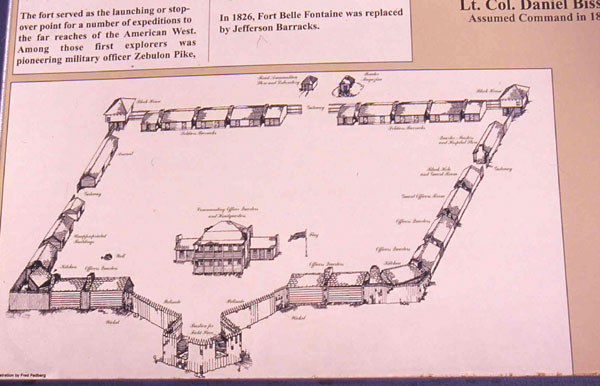
Fort Belle Fontaine was the launch pad of Pike’s 2nd expedition.
With this entry in his journal, Zebulon Pike memorialized both the start of his expedition to explore the American Southwest, and the compelling circumstances that shaped his mission and his route across present day Missouri. Young Captain Pike (27 years old at the time) had only recently returned from another government mission to the North to explore the headwaters of the Mississippi river, when General James Wilkinson prepared to send him out on yet another foray, this time starting up the Missouri River.
In 1806, many of the Indian tribes west of the Mississippi, and in particular the Osages, had forged alliances with the French, and to a lesser extent the Spanish, promulgated by decades of trade and intermarriage. The young American government recognized that its interests could only be forwarded west by making inroads into these alliances and replacing them with American ones. Pike’s mission across Missouri to return home a group of Osage Indian hostages and several of their important chiefs who had been on a diplomatic trip to Washington at the behest of President Thomas Jefferson was a direct implementation of that policy as envisioned by General of the Army, James Wilkinson.
Pike’s companions traveling up the Missouri River in that warm summer of 1806 included Lieutenant James B. Wilkinson, (the General’s son), and the intriguing Dr. John Hamilton Robinson, added to the expedition at General Wilkinson’s order as a “volunteer surgeon.” Robinson appears to have acted as General Wilkinson’s eyes and ears in the foreign Spanish lands in which Pike and his companions would ultimately find themselves. Pike’s ”two lieutenants, one surgeon, one sergeant, two corporals, 16 privates [though one deserted four days into the journey] and one interpreter.”…all were watching over the contingent of fifty-one Indians being returned to their home in southwestern Missouri. Notable Osage chiefs Sans Oreille (No Ears) and Tuttasuggy (the Wind) were among the Indian hostages being returned home.
A week up the Missouri, Pike stopped at “civilization’s” furthest outpost…the little French enclave of La Charette, by Pike’s reckoning some seventy-two-river miles from his start at Fort Bellefontaine at the mouth of the Missouri River.
They spent several days at La Charette, where, as Pike writes, “We arranged our boats, dried our lading, and wrote letters for Belle Fontaine.”
On July 25th Pike arrived at the mouth of the Gasconade River. While Pike and much of his group were traveling upstream on the boat, the Indians were traversing by foot westward along the south bank of the Missouri.. On July 26th, Pike…“commenced at five o’clock to ferry the Indians over the Gasconade, and left the entrance of this river at half past six o’clock in the afternoon.”
By July 28, 1806 Pike was at the mouth of the Osage River near the center of Missouri around present-day Jefferson City, where Pike noted “we stopped, discharged our guns, bathed, etc.” From here he ascended the Osage, seeking ultimately the Grand Osage and Little Osage Indian villages in southwest Missouri’s present Vernon County near the Kansas border. By August 4th Pike was on the Osage River near where present day Bagnell Dam creates the Lake of the Ozarks from the Osage River. On August 12th, one of the former Osage hostages was forcefully persuaded by Pike to return a cup he stole from one of the expedition members. Pike’s journal entry reveals his understanding of the Indians in his charge: “formed from my experience during my intercourse with Indians, that if you have justice on your side, and do not enforce it, they universally despise you.”
By the middle of August Pike arrived at the Osage villages, accomplishing his mission to return the hostages to their home. He recorded in his journal the words of Osage chief Sans Oreille to the tribe upon his triumphal return to their village:
“Osage, you now see your wives, your brothers, your daughters, your sons, redeemed from captivity. Who did this? Was it the Spaniards? No. The French? No. Had either of those people been governors of the country, your relatives might have rotted in captivity, and you never would have seen them; but the Americans stretched out their hands, and they are returned to you! What can you do in return for all this goodness? Nothing; all your lives would not suffice to repay their goodness.”
On September 1, 1806, Pike’s party struck their tents and moved west from the Osage Villages, crossing within several days the border of present day Kansas. Following a course to the northwest his goal was to seek the Pawnee village on the Republican River in an attempt to carry out another of Wilkinson’s orders: peace with and American influence over the Pawnee.
Pike’s time in Missouri was an important part of his expedition to the American Southwest. Not only did the expedition launch from the eastern border of the state at Fort Bellefontaine, but the successful return of the Osage to their villages after a month’s travel across the state by both land and water is recognized as the expedition’s first successful and unqualified accomplishment.
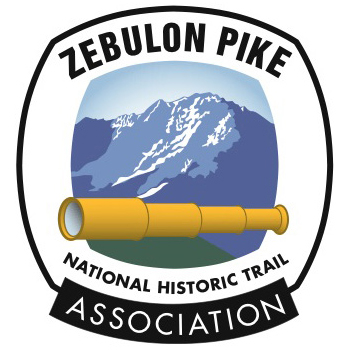
![Introducing the General Zebulon Montgomery Pike INTERNational Historic Trail [ZPIT]](https://www.zebulonpike.org/wp-content/uploads/2018/07/21-St-Anthony-Falls-144dpi-wm-150x150.jpg)

